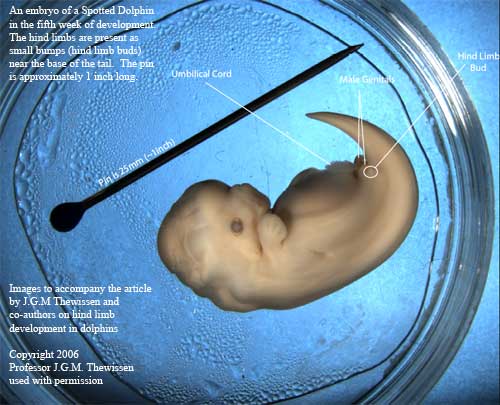I implore you to stick to the subject as well.. Are you implying that you are maintaining the academic discussion? I deleted that to show the contradictions in your first statements..Bgood wrote:Read what you just deleted. I don't understand why you're spending much of your post pointing out perceived contradictions in my statements?
Read more carefully and it is obvious that you are simply misunderstanding. I implore you to stick to the subject and try to maintain an academic discussion.
Only your position...Bgood wrote:Saying that a particular article is not convincing evidence for the terrestrial origin of dolphins is not tantamount to stating that I do not think there is any evidence for the terrestrial origins of dolphins.
There has been no change in position.
Good, I don't follow your logic either..Bgood wrote: I don't follow your logic.
Don't forget about analogous organs... They are organs that have the same function. The fins of fishes and the flippers of dolphins and penguins are analogous organs because they are all used for swimming. The wings of birds, bats, and insects are analogous organs that make flying possible. Their form was determined by their function.Bgood wrote:The two statements are not in opposition.
A conclusion is on the right side of the equation.
Homology --> similar function in the past.
Use in determination is on the left side of the equation.
Similar Function --> Homology
There is no conflict so simply
Thanks for agreeing with me...Bgood wrote:There is no conflict so simply
"Now you are saying it is a poor choice to determine homology.... Well which one is it?" The answer is both.
Tell that to the scientists who were saying that these dolphin fins were once used for walking on land..Bgood wrote:Function cannot be used to determine homology, however homology can be used to determine that at one time the functions were the same (they shared a common ancestor).
The statement remains function is a poor determinent.
Like saying that the functions of these extra dolphin fins were once used for walking? Again, tell that to those scientists...Bgood wrote:Exactly,there is no term functional homology. However your insistence in using functions to show that a common ancestor could not have existed can only be termed functional homology. Which is my point, your argument is flawed, you cannot argue that differing functions are proof against common descent. see below your dolphin quote
Analogy cannot be used to argue for or against common descent.
That is why the scientists were saying that these extra fins were once used to WALK on the earth...Bgood wrote:Function follows structure. So functional analogy can come into the discussion but only after structural homology has been determined.
"Japanese fishers have found an unusual bottlenose dolphin with an extra set of fins that could be an evolutionary throwback to the time when the marine mammals' ancient ancestors walked on land."
Source: //news.nationalgeographic.com/news/2006/11/061106-dolphin-legs.html
Yes I do disagree... Try replacing the elbow joint of a land mammal with one from a dolphin.. See how long it would survive..Bgood wrote:The lets take out all the references to function in your quote. We are left with the following.
What we have left are sesamoid bones varying in size in a population and perhaps a mutation which can cause joints to become imobile. Do you see any of these posing a challenge to evolutionary theory? In other words is it possible that a dog can be born with a fused elbow joint? What about a human born with a sesamoid on the end of their thumb? Of course it's possible. If this population happened to be living in the ocean would nature select against it?
In the case of the elbow joint I would expect this trait to become fairly common in the population. Would you disagree?
1. The bones are fused together so that they form a paddle with the skin. They work perfectly in the ocean, not on land.
2. Dolphins' bones are softer than the ones that land animals have. They are filled with fat and oil. This makes the bones more flexible.
3. The phalanges of the dolphin is longer than that of the land mammals. The dolphin has many bones that make up the “fingers” (fin rays) rather than the typical sequence of three bones seen in the digits of humans and many other mammals. This serves to greatly lengthen the fin.
4. Dolphins do not have a movable elbow joint and hold their pectoral fins rather rigidly out from the body. Their only mobile joint is at the shoulder.
5. The dolphin fin resembles an arm better than a leg. See example of a whale fin..

An anatomical analysis of the forelimb of the mammals suggests that they are homologous structures.
If you agree that dolphins were land animals then perhaps then you would agree with angel that the "common designer" approach would be a lazy and unimaginative one. Maybe God in your view was stupid too...

 The point here however is that it is possible that sesamoid bones can be copted to grow longer. There is no gain in information just a change in developmental signaling. If the case were gene duplication then this too is not outside of the range of posibilities.
The point here however is that it is possible that sesamoid bones can be copted to grow longer. There is no gain in information just a change in developmental signaling. If the case were gene duplication then this too is not outside of the range of posibilities.




